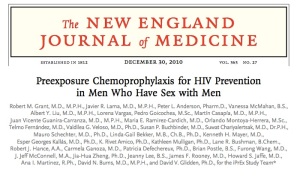In the fall semester of 2014 I taught a reading seminar for master students at SF State on contemporary evolution in human viruses. This blog post contains a list of the papers we read in the seminar.
I posted about this seminar previously here (about the seminar format) and here (no powerpoint allowed), and here (about being nervous for a talk).
The students’ work can be read and seen here (about H1N5), here (polio outbreak), here (Dengue), here (Ebola), here (HIV in court), here (doing my own homework), here (the origin of HIV), here (on bad small things) and here (Hep B).
These are the papers we read:
1. Fast evolution of drug resistance in HIV patient the 1980s
Resumption of HIV antigen production during continuous zidovudine treatment. Lancet. 1988 Feb 20;1(8582):421.
Reiss P, Lange JM, Boucher CA, Danner SA, Goudsmit J.
2. HIV: Doctor infects his ex-girlfriend, phylogenetic evidence in court
3. Very contemporary: the genomics of the West-African Ebola epidemic
4. Using phylogenetics to determine origin of Dengue-3 outbreak in Australia

An explosive epidemic of DENV-3 in Cairns, Australia. PLoS One. 2013 Jul 16;8(7):e68137. doi: 10.1371/journal.pone.0068137. Print 2013. Ritchie SA1, Pyke AT, Hall-Mendelin S, Day A, Mores CN, Christofferson RC, Gubler DJ, Bennett SN, van den Hurk AF.
5. Classic paper from Beatrice Hahn’s lab on origin of HIV-1
6. Timing the start of the HIV-1 pandemic
7. Where did the polio outbreak in Dominican Republic and Haiti come from?
8. Within-patient evolution of vaccine-derived polio virus
9. Hepatitis B within-patient evolution
10. Permissive mutations and the evolution of drug resistance in Influenza
11. Controversial experiments on H5N1 Influenza
Airborne transmission of influenza A/H5N1 virus between ferrets. Science. 2012 Jun 22;336(6088):1534-41. doi: 10.1126/science.1213362.
Herfst S1, Schrauwen EJ, Linster M, Chutinimitkul S, de Wit E, Munster VJ, Sorrell EM, Bestebroer TM, Burke DF, Smith DJ, Rimmelzwaan GF, Osterhaus AD, Fouchier RA.
12. Influential study on treatment to prevent HIV
13. HIV drug resistance in women in Africa who were treated to prevent mother-to-child transmission
14. Evolution of Acyclovir resistance in Varicalla-Zoster Virus
15. Soft and hard sweeps during evolution of drug resistance in HIV

Loss and recovery of genetic diversity in adapting populations of HIV. PLoS Genet. 2014 Jan;10(1):e1004000. doi: 10.1371/journal.pgen.1004000. Epub 2014 Jan 23.
Pennings PS1, Kryazhimskiy S2, Wakeley J3.















